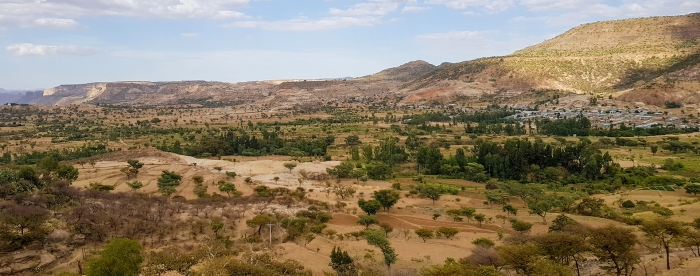On February 10th 2022, at a validation workshop in Addis, Ethiopia’s first National Dryland Restoration Strategy was officially endorsed by the Ministry of Agriculture (MoA) and by Ethiopia Forest Development (EFD).
Ato Habtamu Hailu welcomed this contribution to national efforts, confirming that his ministry is ready to take up and build on the Strategy. Ato Kebede Yilma, Deputy Commissioner of the Environment, Forest and Climate Change Commission (EFCCC), in his opening speech, outlined the strategy development process as well as the key elements, and thanked PENHA and TBI for establishing the necessary platform.

The Strategy was approved by members of parliament from the Pastoral Affairs Standing Committee, state ministers and representatives of key ministries and of seven dryland regions (including those with significant areas of drylands). The Ministry of Planning (MoP), which has responsibility for coordination across sectors, will play a key role in implementation. The Ministry of Irrigation & Drylands (MoID) has specific responsibility for the pastoral drylands, and the Ministry of Water & Energy (MoWE) is another essential partner.
This Strategy emphasises the need to integrate trees, crops, livestock and livelihoods, at landscape and policy levels, through effective intra- and cross-sectoral coordination and better collaboration between governmental agencies at different levels, non-governmental organizations, the private sector, local communities, and development partners. It also emphasizes the crucial importance of inclusive participation in dryland restoration, and the important roles played by women and youth, pastoral and agropastoral communities.

Ethiopia’s drylands cover 70% of the country, and are vital to its economy and the livelihoods of the millions of people who live there. The drylands also account for a large proportion of the country’s carbon sequestration potential, and restoration has been identified as a key focus in the recently revised nationally determined contribution (NDC), with ambitious goals to meet commitments to the Paris Agreement, and targets for the Bonn Challenge and the African Restoration Initiative (AFR100) amongst others.
This Strategy represents an important milestone and the culmination of a year-long effort by a large group of key experts from governmental, international and non-governmental organizations, coordinated by PENHA (the Pastoral and Environmental Network in the Horn of Africa) and supported through TBI’s Working Landscapes programme.

The foundation was laid in April 2021, with the signing of the ‘Declaration of a commitment towards a national dryland restoration strategy’, at a workshop in Addis Ababa, ‘Dryland restoration and dry forest management: Sharing knowledge to meet local needs and national commitments’. This was a shared vision between the federal government represented by the then Environment, Forest and Climate Change Commission (EFCCC), and representatives of six regional governments (Afar, Amhara, Benishangul-Gumuz, Oromia, Somali and Tigray), international research institutions, and NGOs.
The Strategy was developed by the multi-institutional Ethiopia Dryland Restoration Platform established in April 2021, building on many decades of experiences of the more than 40 active members, key practitioners, researchers and others involved in related aspects of rural development. Work was divided into four thematic groups: (a) sustainable management of natural resources led by Ato Niguse Hagazi (ICRAF), (b) livelihoods, markets and value chains led by Dr Abeje Eshete (EEFRI), (c) land tenure community rights and governance led by Dr Abbadi Girmay Reda (TARI), and (d) policy and coordination led by Ato Demeke Tsehay (MoPD). The Platform met to further refine the strategy in a series of meetings, in August, October and December 2021.
The resulting Strategy lays out a path towards unleashing the drylands’ potential for economic development that is inclusive, while maintaining environmental sustainability and ecological conservation. Developed under the auspices of the then EFCCC (now Ethiopian Forest Development, EFD), the Strategy shall be owned and taken up by the Ministry of Agriculture, with cross-sectoral coordination involving relevant ministries and agencies at different levels of government. This will be facilitated and overseen by the Ministry of Planning and Development, who will work to translate the Strategy into action.
The affirmation signed on 10 February by all 40 participants of the strategy validation workshop urges all relevant federal, regional and local government agencies to work towards its implementation, given the importance of drylands in Ethiopia. It also encourages regional governments with significant dryland areas to adapt and adopt the fundamentals of this national strategy into their regional modalities and actions plans, leveraging support from NGOs and the private sector, while keeping local communities at the heart of all developments. All confirmed their commitment to working towards the development and implementation of this National Dryland Restoration Strategy, and to collaborate with regional administrations in refining actions to suit the particular contexts of each dryland region.
Photo banner: Restoration practices in Eastern Tigray Region, Ethiopia. Photo by Niguse Hagazi (ICRAF).



